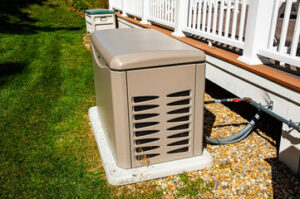Epoxy flooring is long-lasting and requires less maintenance than other flooring solutions. They also resist the odor and moisture issues that other floor coatings have.

They’re resilient and can withstand chemical spills such as oil, bleach, transmission fluid and cleaners. They’re also easy to sanitize and are slip-resistant, making them safe for employees and customers.
Epoxy floors are extremely durable and easy to maintain. A daily sweep and mopping are typically all that is needed to keep your floors dirt and grit free. It is also important to spot clean any spills or tracked-in chemicals as they occur, and not to let them sit for too long. If a stain does happen, there are a variety of cleaning products available to address the situation and prevent the blemish from reappearing.
Gentle Detergents for Regular TLC
The key to maintaining epoxy floors is regularly sweeping, using a soft-bristle broom and vacuuming if necessary. This removes the majority of dust and dirt, preventing scratches on the floor’s surface and helping to extend its lifespan. Regular mopping with warm water is also recommended, using a pH-neutral detergent to ensure the floors shine is not dulled. This is especially helpful in areas that may see high traffic.
During this time, it is also essential to check the floors for signs of wear or damage and have any issues addressed promptly to prevent deterioration. This is true for both commercial and residential applications of epoxy flooring. Scratches, gouges or cuts can be buffed out with some elbow grease and the use of a soft cloth. In some cases, deeper scratches or scuffs may require professional repair or restoration.
For stains, a clear ammonia/water solution is the best option. Simply mix 2-3 ounces of ammonia per gallon of water and dip your mop in the solution to scrub the area. This should take care of most stains, but some may need more vigorous scrubbing with a kitchen scrubbing sponge or soft deck brush.
One of the main benefits of epoxy is that it creates an impenetrable barrier that protects surfaces from spills, flooding or other water-related damages. This makes it a great choice for any space that could see accidental water spillage or flooding, such as fire station bays or garages. It can also be beneficial in commercial applications where harsh chemicals like oils or acids are commonly spilled. This is because the toxins will not absorb into the flooring, but rather be carried away by the water.
Water-Resistant
If you are looking for a waterproof floor covering for your commercial property, industrial space, or residential area, epoxy flooring is an excellent option. It is very long-lasting and can withstand heavy foot traffic. It is also resistant to chemicals, slippages and high temperatures, making it an ideal choice for a variety of environments.
Epoxy floors are a seamless surface with no cracks or gaps, making them fully waterproof. They are made by mixing a semi-liquid epoxy resin with a hardener, which triggers a chemical reaction that creates a durable and strong material. The strong adhesion between the epoxy surface and concrete underneath prevents water from seeping through, protecting both the substrate and anything stored in the space.
As well as being waterproof, epoxy is stain-resistant and easy to clean. Regular sweeping and light mopping with a mild detergent are usually sufficient, and even tougher stains can be removed using a degreaser. However, it is important to always test cleaning products on a small section of the floor first to ensure they do not damage or discolour the epoxy.
Aside from the practical advantages of an epoxy floor, it also offers a beautiful aesthetic effect. The shiny finish of an epoxy floor creates a bright and spacious atmosphere, allowing the space to appear larger. It also reflects light better than other types of flooring, which can help with visibility and potentially reduce energy bills by reducing the need for additional lighting.
Another great benefit of epoxy is its ability to be customized. You can choose from a wide range of colours and textures to suit the environment and style of your space. It is also possible to include logos and graphics, further enhancing the visual appeal of your space.
Slip-Resistant
Slipping is a safety issue that can be costly for many businesses. Thankfully, epoxy flooring is not slippery by nature, and there are options available that will make the floor completely slip-resistant if that’s what you need.
Slip resistant floors are important in certain industries, and they help reduce the risk of accidents that could lead to injury for employees. Epoxy flooring is a durable floor coating that can hold up to the rigours of heavy foot and machinery traffic, as well as chemicals and other liquids without becoming damaged or slick.
It is possible to add traction to an existing epoxy floor by adding additives that create a rougher texture, which increases traction and prevents people from slipping on the surface. One popular option is a ground polymer grit such as SharkGrip, which can be added to the topcoat of an epoxy flooring system. This type of additive is ideal for low to medium foot traffic, as it is not as aggressive as other options such as aluminum oxide and does not interfere with the finish of an epoxy floor.
Other additives that can be used to improve the traction of an epoxy floor include colored quartz, silica sand, aluminum oxide and plastic media (such as glass spheres, polypropylene spheres or walnut shells). When these are mixed with the topcoat of an epoxy floor, it provides a rougher texture that is more resistant to slips.
The texture of an epoxy floor also depends on the thickness of the topcoat. The higher the thickness of the topcoat, the more traction the floor will have. The thickness of the topcoat can be increased by applying additional layers of epoxy, and by using an aggregate that is more aggressive than the standard sand that is included with most epoxy applications.
It is important to note that no flooring is ever completely slip-proof, and any surface that is slippery is a hazard for anyone walking on it in flat shoes or with bare feet. That being said, the level of slip resistance in an epoxy floor can be greatly improved by following some simple maintenance rules. This includes sweeping the floor regularly, promptly cleaning spills and cleaning the floor with a mild detergent and water mixture when necessary.
Durable
Unlike other flooring materials, epoxy floors can stand up to the wear and tear of constant use. This type of floor coating has a high tensile strength rated at up to 10,000 psi, which means it can carry the weight of heavy machinery and vehicles without any signs of damage or degradation. However, the durability of an epoxy floor also depends on several factors.
Proper maintenance practices play a critical role in extending the lifespan of the floor coating. Floors that are regularly swept, free of debris, and undergo scheduled maintenance tasks like recoating when necessary tend to last longer. Conversely, neglected floors that accumulate dirt, grime, and other contaminants over time may require more frequent maintenance and a shorter lifespan.
Another factor that contributes to the longevity of an epoxy floor is its ability to resist corrosion and abrasion. Chemical-resistant epoxy coatings are often the preferred choice for commercial facilities that frequently expose their floors to corrosives and harsh chemicals. This includes warehouses, hospitals, and retail establishments.
Finally, the durability of an epoxy floor also depends in part on its installation process. When professional flooring contractors are hired to apply the epoxy to a concrete surface, they must thoroughly clean and prepare it beforehand. This often involves removing any existing layers of sealant or paint, as well as grinding and levelling the surface. Then, the epoxy mixture is applied according to the manufacturer’s instructions using rollers or squeegees.
Epoxy is a great option for anyone looking to revamp their commercial, industrial or residential floors. It is durable and provides a unique visual effect that can be customized with different colors and decorative elements like colored flakes. Furthermore, it is easier to maintain and repair than other types of flooring materials. When you’re ready to consider your options for revamping your concrete floors, contact a local epoxy flooring contractor today! They can help you choose the right material to suit your needs and provide a professional and efficient installation service.







